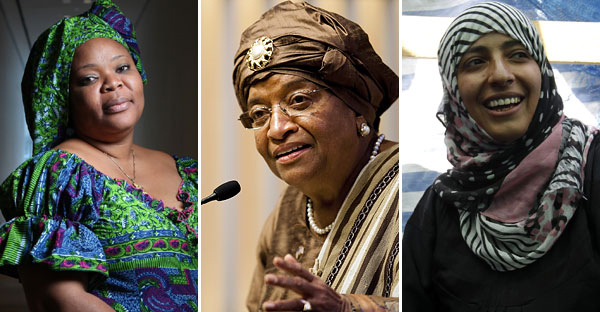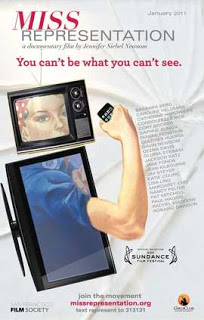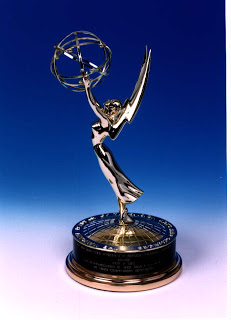Tag: Amber Leab
3 Women Share 2011 Nobel Peace Prize
 |
| Leymah Gbowee, Ellen Johnson Sirleaf, and Tawakkul Karman share the 2011 Nobel Peace Prize |
After a week of protests I was detained by the security forces in the middle of the night. This was to become a defining moment in the Yemeni revolution: media outlets reported my detention and demonstrations erupted in most provinces of the country; they were organised by students, civil society activists and politicians. The pressure on the government was intense, and I was released after 36 hours in a women’s prison, where I was kept in chains.
Documentary Preview: ‘The Bro Code: How Contemporary Culture Creates Sexist Men’
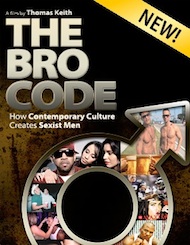 |
| The Bro Code: a new documentary from MEF |
It’s Ada Lovelace Day!
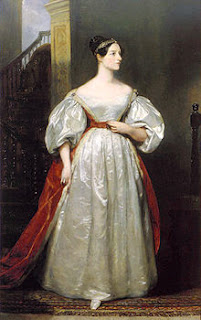 |
| portrait of Ada Lovelace |
In 1842 Charles Babbage was invited to give a seminar at the University of Turin about his analytical engine. Luigi Menabrea, a young Italian engineer, and future prime minister of Italy, wrote up Babbage’s lecture in French, and this transcript was subsequently published in the Bibliothèque Universelle de Genève in October 1842.
Babbage asked the Countess of Lovelace to translate Menabrea’s paper into English, subsequently requesting that she augment the notes she had added to the translation. Lady Lovelace spent most of a year doing this. These notes, which are more extensive than Menabrea’s paper, were then published in The Ladies’ Diary and Taylor’s Scientific Memoirs under the initialism “AAL”.
In 1953, over one hundred years after her death, Lady Lovelace’s notes on Babbage’s Analytical Engine were republished. The engine has now been recognised as an early model for a computer and Lady Lovelace’s notes as a description of a computer and software.[27]
Her notes were labelled alphabetically from A to G. In note G, the Countess describes an algorithm for the analytical engine to compute Bernoulli numbers. It is considered the first algorithm ever specifically tailored for implementation on a computer, and for this reason she is often cited in to be the first computer programmer.[28] However the engine was never actually constructed to completion during Lovelace’s lifetime.
The computer language Ada, created on behalf of the United States Department of Defense, was named after Lovelace. The reference manual for the language was approved on 10 December 1980, and the Department of Defense Military Standard for the language, “MIL-STD-1815”, was given the number of the year of her birth. Since 1998, the British Computer Society has awarded a medal in her name[29] and in 2008 initiated an annual competition for women students of computer science.[30]
Ada Lovelace Day has been founded to commemorate her historic place in computing history, and to celebrate women in mathematics, science, engineering, and technology. You can learn more about Ada Lovelace and the project Ada Lovelace Day at the website Finding Ada.
Now, on to the movie!
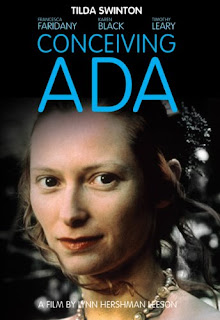 |
| Conceiving Ada (1997) |
Director Spotlight: Nicole Holofcener
You can read previous Spotlights on Allison Anders, Kathryn Bigelow, Jane Campion, Sofia Coppola, Tanya Hamilton, and Agnes Varda, and a Quote of the Day on Dorothy Arzner.
 |
| Director Nicole Holofcener |
I’ve seen three of her films, and it’s fair to say that one of the major themes she’s interested in is how to be wealthy and privileged in a society that largely isn’t. One could lob this at her as a criticism–that she’s interested in rich white women–and it’s not untrue. However, I’ve always found her movies thoughtful and aware of privilege, rather than flaunting it unawares, and her characters flawed, complex, contradictory, and, ultimately, realistic. Women are always at the center of the story, and we all know how rarely that’s done, much less done well.
 |
| Please Give (2010) |
Please Give is Holofcener’s most recent film. It won the Robert Altman Award and was nominated for Best Screenply by the Independent Spirit Awards, and was nominated for a Writer’s Guild of America (WGA) Award. The film was distributed by Sony Pictures Classics. The movie has an 88% fresh rating on Rotten Tomatoes (which, I know, isn’t the most objective or accurate system, but, still is worth noting).
I saw the movie when it was in theatres, and remember heated conversations about its characters and its ultimate meaning. Most of the discussions involved its ambivalent ending, and if you’ve seen it, I suspect you have strong feelings about that ending, too.
Here’s a bit of the synopsis, from the official website:
Kate (Catherine Keener) has a lot on her mind. There’s the ethics problem of buying furniture on the cheap at estate sales and marking it up at her trendy Manhattan store (and how much markup can she get away with?). There’s the materialism problem of not wanting her teenage daughter (Sarah Steele) to want the expensive things that Kate wants. There’s the marriage problem of sharing a partnership in parenting, business, and life with her husband Alex (Oliver Platt), but sensing doubt nibbling at the foundations. And there’s Kate’s free-floating 21st century malaise–the problem of how to live well and be a good person when poverty, homelessness, and sadness are always right outside the door.
Watch the trailer:
 |
| Friends with Money (2006) |
This is the one Holofcener movie I haven’t seen. Starring Jennifer Aniston, Catherine Keener, and Frances McDormand, I’d say this movie has the most commercial appeal of her work, but not the highest ratings. Friends with Money won McDormand a Best Supporting Female Independent Spirit Award, and Holofcener an Independent Spirit Best Screenplay nomination. She also won the Dorothy Arzner Directors Award.
From the official website‘s synopsis:
FRIENDS WITH MONEY examines the shifting relationships between four women who have been friends all of their adult lives. Now as they settle into their early middle age, their friendship is increasingly challenged by the ever-growing disparity in their individual degrees of financial comfort. It is a poignant snapshot of the way we live today, where the safe divisions that class and money have created are eroding under the unstoppable force of everyday life and the result is a painfully hilarious examination of modern life that manages to be both brutally honest and ultimately uplifting.
Watch the trailer:
 |
| Lovely & Amazing (2001) |
Lovely and Amazing is my favorite of Holofcener’s movies, though it’s been several years since I’ve seen it, and can’t provide many specific details other than a major focus in on the relationship between a mother and her daughters. It’s definitely worth renting.
The movie’s website is gone, but here’s the plot summary from IMDb:
The Marks family is a tightly-knit quartet of women. Jane is the affluent matriarch whose 3 daughters seem to have nothing in common except for a peculiar sort of idealism. Setting the tone of vanity and insecurity, Jane is undergoing cosmetic surgery to alter her figure, but serious complications put her health in real danger. Former homecoming queen Michelle, the eldest daughter, has one daughter of her own and an alienated, unsupportive husband. Elizabeth, the middle sister, has an acting career that is beginning to take off, but is timid and insecure, and habitually relieves her trepidation by taking in stray dogs. Only the youngest sister, Annie, an adopted African American 8-year-old, stands a chance of avoiding the family legacy of anxious self-absorption. If only her intelligence and curiosity will see her through what promises to be a confusing adolescence. Each of the women seeks redemption in her own haphazard way.
Watch the trailer:
 |
||
| Walking and Talking (1996) |
I couldn’t find a trailer for Walking and Talking (if you find one somewhere, please let me know!), but it seems you can watch the whole thing on YouTube, if you’re so inclined. Better yet, rent it and watch with some friends. It’s a quiet movie, in that not a lot happens (as the title suggests), but it’s engaging and just good.
Here’s a synopsis, from Netflix, that doesn’t really do the movie justice:
Amelia (Catherine Keener) and Laura (Anne Heche) have been best friends since the sixth grade. For the first time, their lives are taking different paths: Laura is in love and planning her wedding, while Amelia begins to despair that she’ll ever find the right man. But as they try to adjust their childhood friendship to the challenges of adulthood, these friends continue to laugh together at life and love.
Who’s up for a Holofcener marathon?! Hey, come to think of it…
Preview: Miss Representation
 |
| Miss Representation (2011) |
I love the tagline for this movie: “You can’t be what you can’t see.” That idea is very similar to the driving force for this site–the way women are represented in film, television, and media in general has a dramatic effect on how women are actually perceived in our culture. The (mis)representation of women directly contributes to the inequality of women and to violence against women. It’s no coincidence that in a culture where women are systematically devalued in media, we have abysmally low numbers of women in positions of power (women represent only 17% of Congress, making the U.S. “90th in the world in terms of women in the national legislature”).
Here are some stats from the movie worth considering:
- At age 7, and equal number of boys and girls state that they want to be President of the United States. At age 15, this is no longer the case.
- The 2010 mid-term election is the first time since 1979 that women haven’t made gains.
- Women comprise only 16% of all writers, directors, producers, cinematographers, and editors.
- Teenagers in the U.S. consume 10 hours and 45 minutes of media (television, Internet, music, movies, magazines) every day.
Ripley’s Pick: Meek’s Cutoff
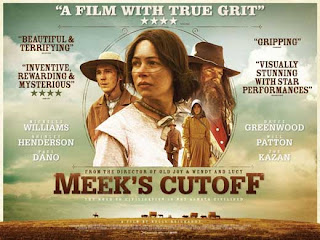 |
| Meek’s Cutoff (2010) |
The Western genre is traditionally tied up in all kinds of rugged masculinity, and of all film genres, maybe best exemplifies the dominant way the United States collectively imagines itself: sturdy, adventurous, self sufficient, brave, and, well, pretty butch. The problem is, however, that this narrative leaves out a significant number of people, and a significant portion of the story. The Western (and the story of the U.S. West) tries to be the story of the United States itself, and reveals ideology so clearly where it fails–namely, in its depiction of women, indigenous peoples, immigrants, and African-Americans. The genre is, in other words, ripe for retellings and allegory.
If we consider some of our American cinematic “masterpieces,” we often find them absent vibrant female characters, for example (think The Godfather, Citizen Kane, and Chinatown to name just three). As much as I desperately want to see my gender portrayed with respect, honesty, and integrity, many films that deal with the great American mythos don’t have much room for female characters, simply because women haven’t been a part of, and are often still excluded from, the creation story we tell ourselves—a story of brutal boots-on-the-ground capitalism and, negatively speaking, punishing exploitation. It’s a Judeo-Christian story in which the individual male forges his path through the wilderness, an anti-hero who, despite his great wealth and power, can’t overcome his subsequent moral corruption. What’s important to recognize is that the marked absence of “the other” in these films is a comment on an institutionalized patriarchy that extends beyond our everyday interactions to the very heart of our cultural mythos. There Will Be Blood is yet another film that further cements a white male-dominated American story of origin.
Beware ‘The Ides of March’
YouTube Break: Too Many Dicks on the Daily Show
Here’s a remix from Rebellious Pixels.
From Rebellious Pixels’ description:
I am a fan of The Daily Show about 50% of the time but often find myself disappointed with the overwhelmingly male-centered style, jokes, segments and guests each night. Sure the occasional, strategically deployed, dick joke can be an effective tool for pointing out sexism or undermining homophobia but more often than not Jon Stewart and his team just use penis humor to get cheap laughs. I can’t help but feel that there are, in fact, just too many dicks on the dance floor.
The serious lack of women in on-screen or leading creative roles on The Daily Show and other late-night comedy shows has been well documented and discussed in recent years. But here’s a quick recap: Only 3 of the 12 regular correspondences/contributors on The Daily Show are women. Only 2 of the 16 writers are women. And so far barely 15% of the guests in 2011 have been women.
Be sure to read the entire description (and watch other remixes) here.
(And now that song is stuck in your head. You’re welcome.)
2011 Emmy Analysis
More than a week has passed since the 2011 Emmy Awards, but there are a few moments I can’t stop thinking about. I live-tweeted the show this year, which is both a fun and exhausting experience, and enjoyed the interactions with other people watching and reacting on Twitter. (What?! You don’t follow us on Twitter? Go! Now!) Jane Lynch did a wonderful job hosting, and threw out some memorable zingers (The cast of Entourage!).
Here are my thoughts:
Sometimes I wonder if any women at all would be recognized in film/television if the acting awards were gender neutral (and I asked earlier this year if we need a Best Female Director category at the Oscars).
Here are the winners:
- Melissa McCarthy won Lead Actress in a Comedy Series for Mike & Molly
- Julie Bowen won Supporting Actress in a Comedy Series for Modern Family
- Julianna Marguiles won Lead Actress in a Drama Series for The Good Wife
- Margo Martindale won Supporting Actress in a Drama Series for Justified
- Kate Winslet won Lead Actress in a Miniseries or Movie for Mildred Pierce
- Maggie Smith won Supporting Actress in a Miniseries or Movie for Downton Abbey (*she wasn’t there to accept the award)
I won’t say much about this, because it’s been written about in very smart ways already (check out Opinioness of the World‘s take, for starters), but it’s interesting that this setup, planned by Amy Poehler, was one of the few moments that deviated from awards show standards. I loathed Rob Lowe’s “girls” comment, even if it was part of the plan (I don’t know if it was), and feel ambivalent about the rest. Yes, the beauty pageant spoof emphasizes the fact that these shows are often most watched and discussed for What The Women Are Wearing. For many viewers, I suspect, fashion overshadows the actual awards. Women’s bodies and apparel choices are criticized and critiqued in every imaginable way, as if they are public property. But I question how effectively that message was delivered. The moment I think worked much better was Poehler and McCarthy joking about men finally getting substantial roles this year. However, it was great to see this group of talented women up on the stage together, supporting one another, and bringing a feminist sense of humor to the show.
Also, someone should tell Oustanding Supporting Actor in a Comedy Series winner Ty Burrell that repeated jokes about wearing makeup to work and being a “very masculine lady” (even in the context of imagining what his father would say about his job) doesn’t really jibe with that whole “making people more tolerant” idea.
If you haven’t already, check out our reviews of the 2011 Emmy Nominees.
Ripley’s Rebuke: ‘Whitney’ versus Whitney
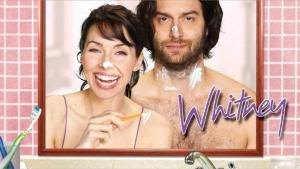 |
| Even the promo shots for Whitney attempt retro, but come off as regressive. |
Mad Men and the Role of Nostalgia
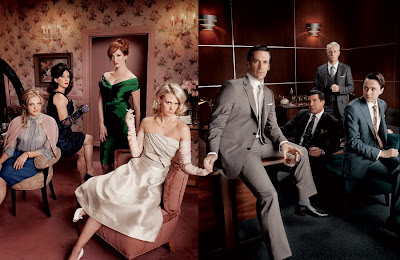 |
| The cast of Mad Men — aren’t they lovely? |
Technology is a glittering lure, but there’s the rare occasion when the public can be engaged on a level beyond flash, if they have a sentimental bond with the product. My first job, I was in house at a fur company with this old pro copywriter–a Greek, named Teddy. Teddy told me the most important idea in advertising is “new.” It creates an itch. You simply put your product in there as a kind of calamine lotion. But he also talked about a deeper bond with the product: nostalgia. It’s delicate, but potent. Teddy told me that in Greek, “nostalgia” literally means “the pain from an old wound.” It’s a twinge in your heart far more powerful than memory alone. This device isn’t a spaceship, it’s a time machine. It goes backwards, and forwards… it takes us to a place where we ache to go again. It’s not called the wheel, it’s called the carousel. It lets us travel the way a child travels – around and around, and back home again, to a place where we know are loved.
But I keep thinking about, you know, nostalgia. How you remember something in the past and it feels good, but it’s a little bit painful. Like when you were a kid.
